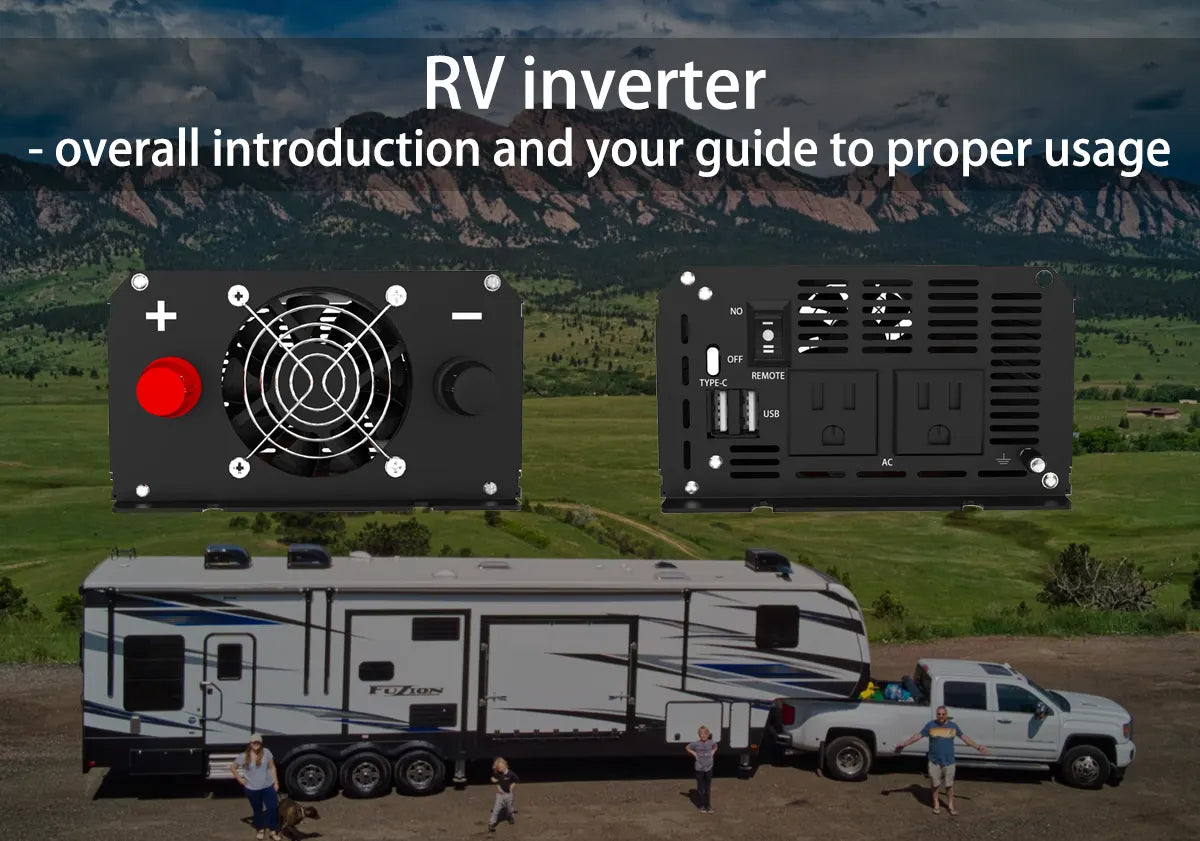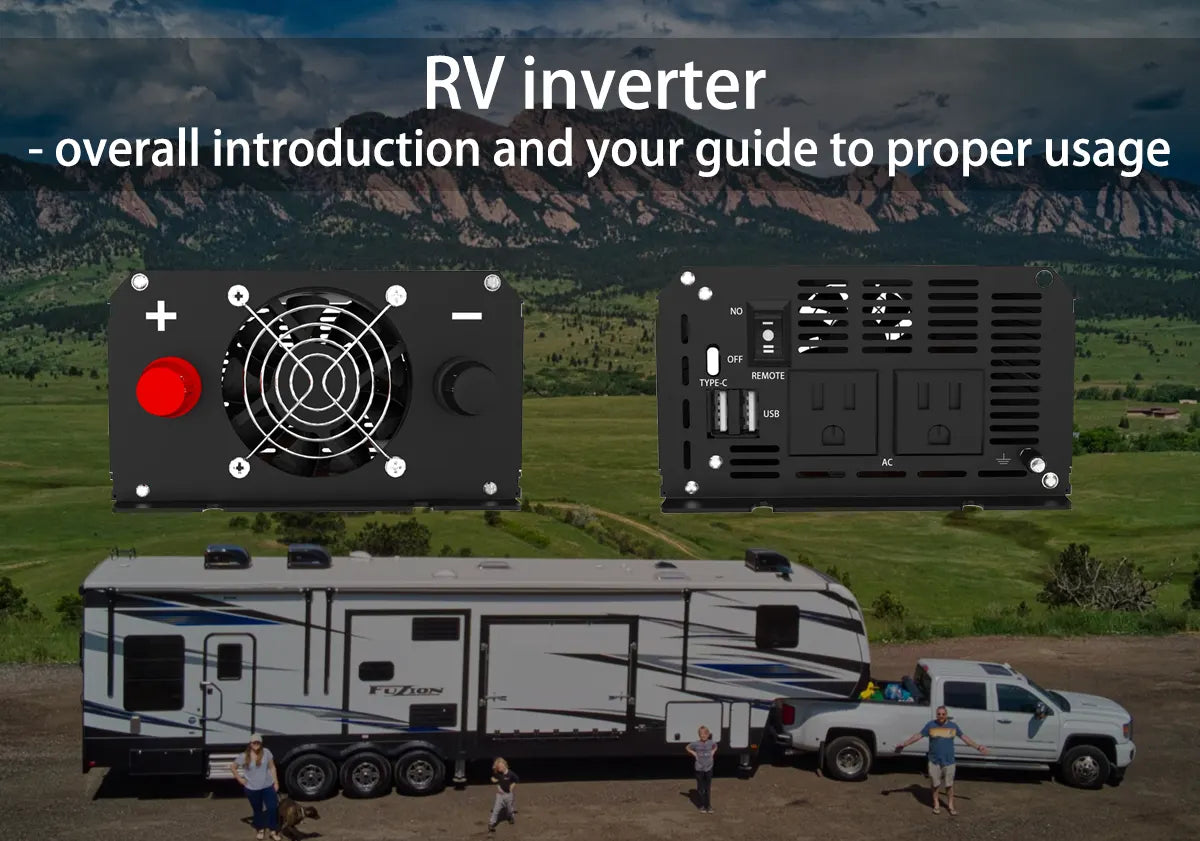
If you are an RV owner, you probably already know how essential the inverter is to the functionality of your RV. You also know that using and maintaining this RV inverter correctly is a no-brainer because it helps avoid inconvenience and damages that may lead to significant complications.
However, it’s no news that keeping your RV inverter in good shape can be a challenging task, especially if you don’t know the major dos and don’ts of inverter on RVs. But no need to worry because this article will explain the basics of how to use and maintain your RV inverter for better functionality and durability.
Main content:
1. What is an RV inverter?
An RV inverter is an essential component that helps supply usable power for the electrical components in your RV. It does this by converting the direct current provided by your RV battery into the usable AC amperage that powers your appliances.
Since RVs are mobile and cannot be confined to a single location, they usually are equipped with solar panels and energy storage lfp battery, commonly 12 volt 100ah deep cycle lithium battery.
However, the battery usually only generates DC power, which is not the ideal power form for appliances, and that’s why you need an inverter. So, in essence, an RV inverter acts like a transformer that helps provide a suitable power supply for your RV.
2. Main functions of RV inverter
You must have heard a lot of opinions about your RV’s functions and how the inverter works. But here’s what you should know about your RV Inverter: its primary purpose is convert direct current into appliance-friendly AC amperage.
An RV inverter CANNOT charge your RV battery. Its job is to convert the already available power to one that is safe and usable for your motorhome components. Of course, your RV is not always dependent on the inverter for refined power, as you can still connect to generators and shore power, which all use alternating current. But then, your options are usually limited when you are on the move, and that’s when the inverter comes into play.
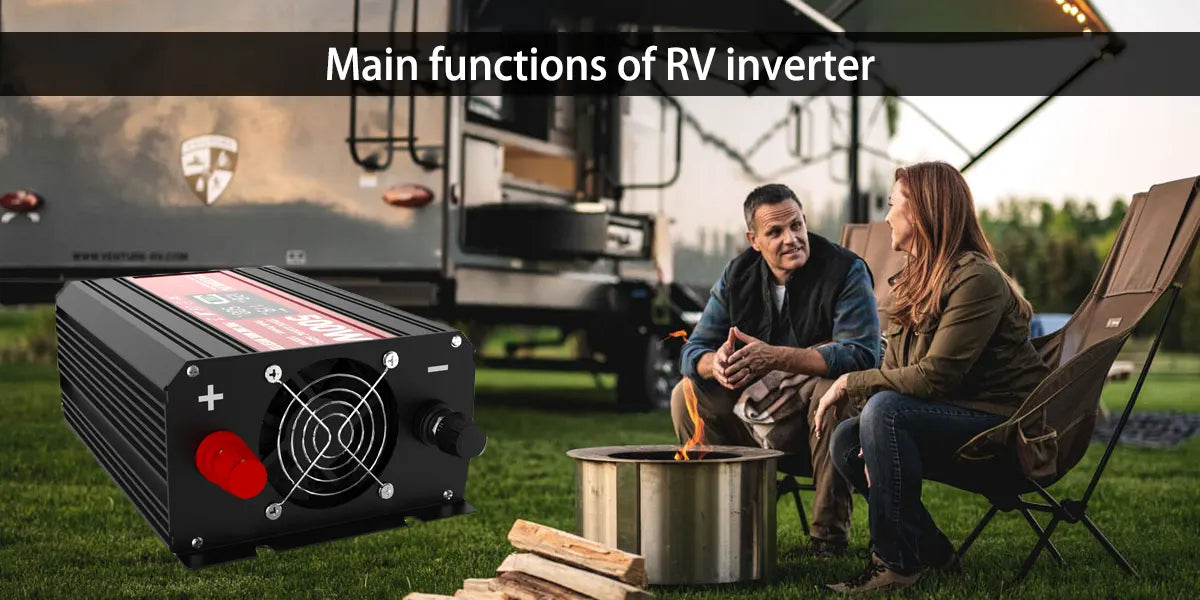
3. Different types of RV inverter
There are three basic types of RV inverters, each with unique features. They are:
- Square wave inverter:
The square wave inverter is one of the least used today due to its limited capabilities. While it sure does generate alternating current, the current usually includes sharp corners that are not very suitable for most appliances and RV devices.
- Modified sine wave inverter:
The modified sine wave inverter is a upgrade to its square counterpart because it softens or modifies the alternated current to make it slightly more usable. But the main disadvantage of this inverter is that it reduces the quality of energy generated, hence making your appliances function less efficiently.
- Pure sine wave inverter:
This inverter type is top of the chain for a reason, and no wonder it is also the most popular RV inverter today. It functions brilliantly and produces AC amperage similar to what you get from local grids. Additionally, it is reliable and supports optimal power efficiency, making it the most suitable inverter for RV.
Although the price of pure sine wave inverter is relatively higher, compared with modified wave, pure sine wave has no interference, so there is no need to worry about being unable to carry electrical appliances.
4. How does RV inverter work?
The inverter works just like a power converter to transform the DC power in your battery to the more usable AC power. It does this by modifying the generated power and disbursing it all through the RV in a compatible form.
But you must note that your inverter works hand in hand with your battery, and it can only convert the amount of power generated by the battery.
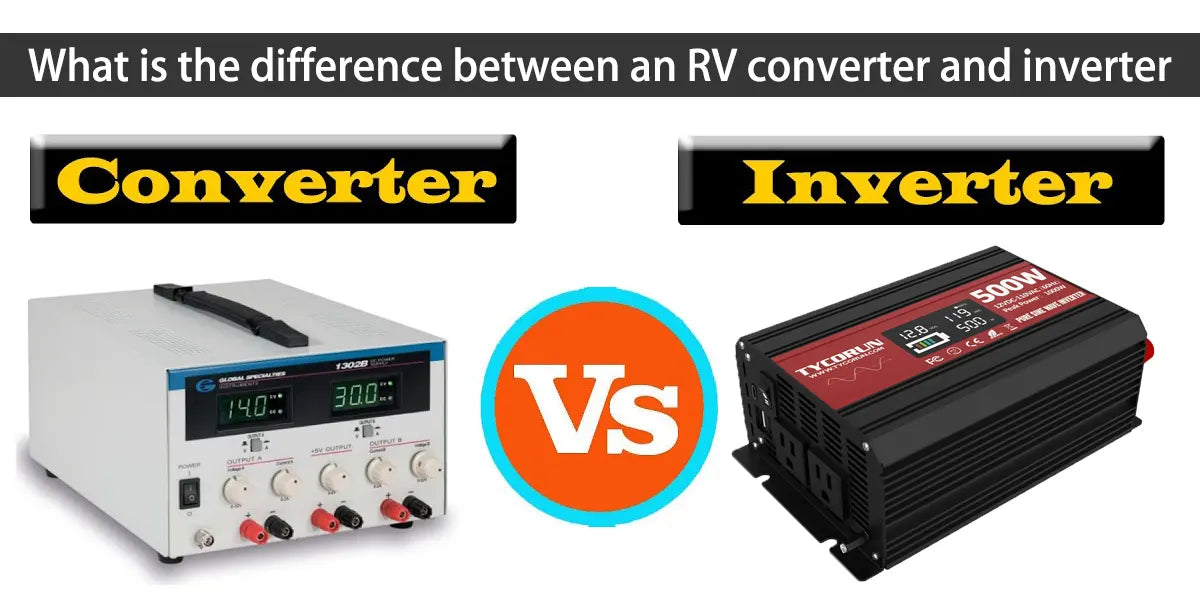
5. What is the difference between an RV converter and inverter
It is a common misconception that converters and inverters are interchangeable especially since they function pretty similarly. However, that’s not the case, and as a matter of fact, the two are quite the opposite.
Of course, they share specific similarities and are both classified as electrical devices. But while inverters are charged with transforming direct currents into alternating current, converters convert ACs into DCs.
6. How to choose the right inverter size for your RV
Different RVs often have different power consumption, mostly depending on the battery and power requirements. For some, the current is only needed to power lights and computers, while others may need to power extra appliances like microwaves, refrigerators, etc. Well, you already know that the higher your consumption, the larger the inverter you’ll need.
So, when you’re faced with the task of choosing the right inverter size for your RV, here’s an easy way out. When you add up all the individual wattage of your appliances, it gives you your total consumption.
If there are inductive loads in these appliances (such as refrigerators, air conditioners, washing machines, etc. that require a starting current several times larger than the normal operating current), the power should be calculated as twice the rated output power to select an inverter with appropriate power.
Only inverters that can meet the starting peak power can work properly. And the voltage also needs to be considered. The voltage of the inverter must be consistent with the voltage of the RV battery or other power wheels battery.

7. How to install an RV inverter
It is best to leave the installation process to a professional, but if you insist on doing it yourself, you’ll also find it to be a straightforward process. The basic steps to installing an RV inverter include:
- Clear out the space
- Secure the inverter and all the necessary tools
- Disconnect the battery terminals before you start the installation
- Check the layout diagram to get an idea of the arrangement -Mount the inverter and set up the components
- Crosscheck with the layout diagram to ensure the inverter is installed correctly.
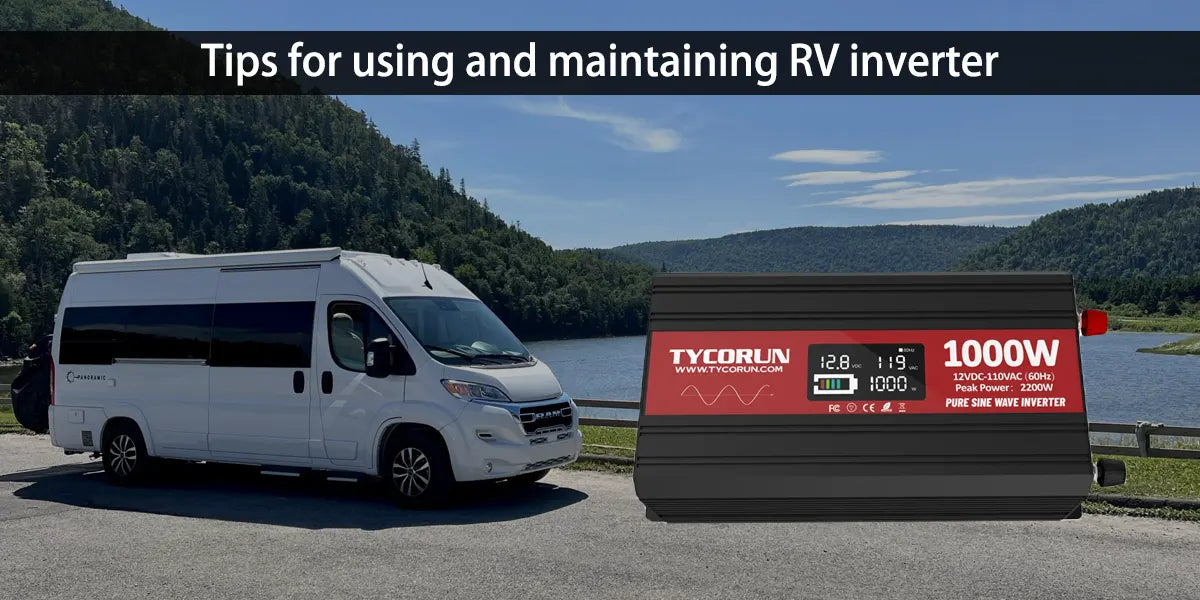
8. Tips for using and maintaining RV inverter
Maintaining your RV inverter is non-negotiable because anything less will see its functionality reduce drastically. But you’ll also be interested to know that RV inverter maintenance is not as demanding as it sounds. Here are some basic usage and maintenance tips for your RV inverter.
- Perform regular inspections
- Ensure the inverter is connected to a healthy battery
- Keep your inverter in a cool, dry place, and make sure it is cleaned regularly
- Be careful not to go beyond the designated power consumption
- Check the electrical connections during regular inspections
- If the inverter develops any fault, don’t hesitate to call for professional help.
9. The best inverter for RV
The availability of different inverter products can often cause a selection dilemma, especially since they all come in different qualities. However, it would be best to stick with top-rated products like the TYCORUN pure sine wave inverter.
This product is tested and trusted to deliver pure and pollution-free AC amperage for RV with certifications such as UL485, PSE, CE, FCC, and UKCE. The TYCORUN inverters have voltage stabilizing function to achieve stable voltage; low no-load current (0.6A) to achieve low battery loss.
All of the series products, including 2000w pure sine wave inverter and 3000w inverter are equipped with a radio frequency remote control function and an LCD LED display to monitor power and voltage values in real time with an accuracy of 98% (which is a very high standard in the entire industry). It is also durable and supports optimal power efficiency, which is excellent for your RV.
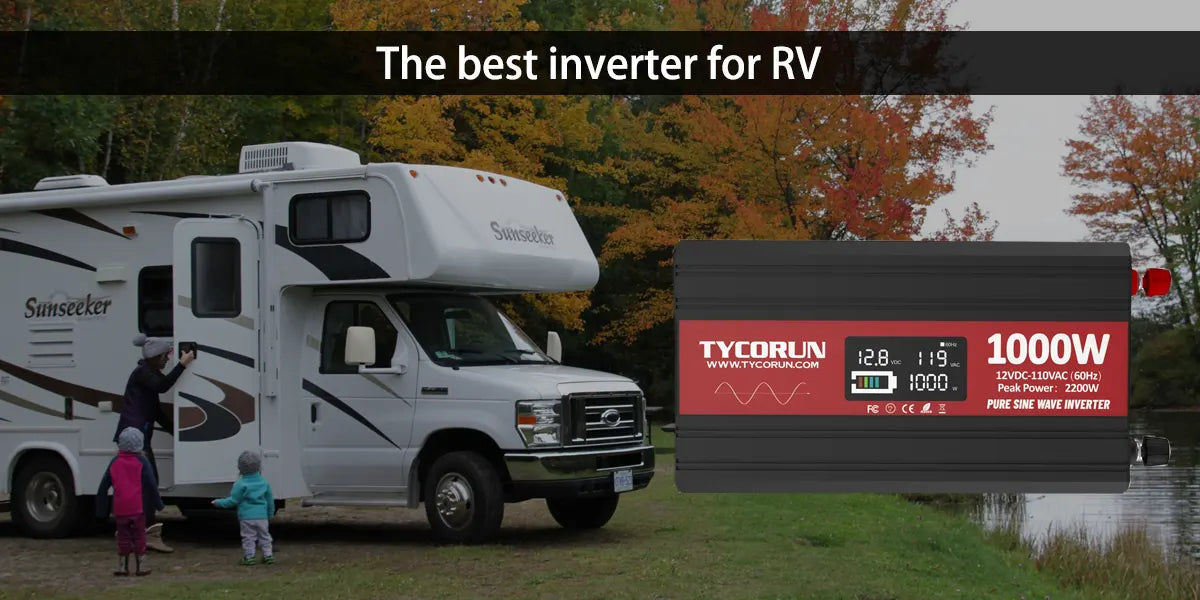
10. FAQs
① How do I know my RV inverter is working?
It’s pretty easy to know if your inverter is working or not. While there are many ways to determine this, the easiest would be to check out the LEDs. If they are all lit up in green, it means your RV inverter is working just fine.
② Can more than one inverter be used at the same time?
Of course, it is more than possible to power your RV using multiple inverters at the same time. But then the connection process is rather sophisticated so you need to pay attention to safety issues, and you may need the services of experts.
③ Should I leave my RV inverter on all the time?
Leaving your RV inverter on all the time will not damage it instantly. However, it is best to leave it off and only turn it on when you want to make use of its power.
Different types of RV inverters are available from Tycorun, please check our 3000 watt car inverter, 2000 watt inverter, 1000 watt inverter, 500 watt inverter for relaible and safe adventure.
Related posts: Battery stores near me, 12v battery, Off grid solar batteries


